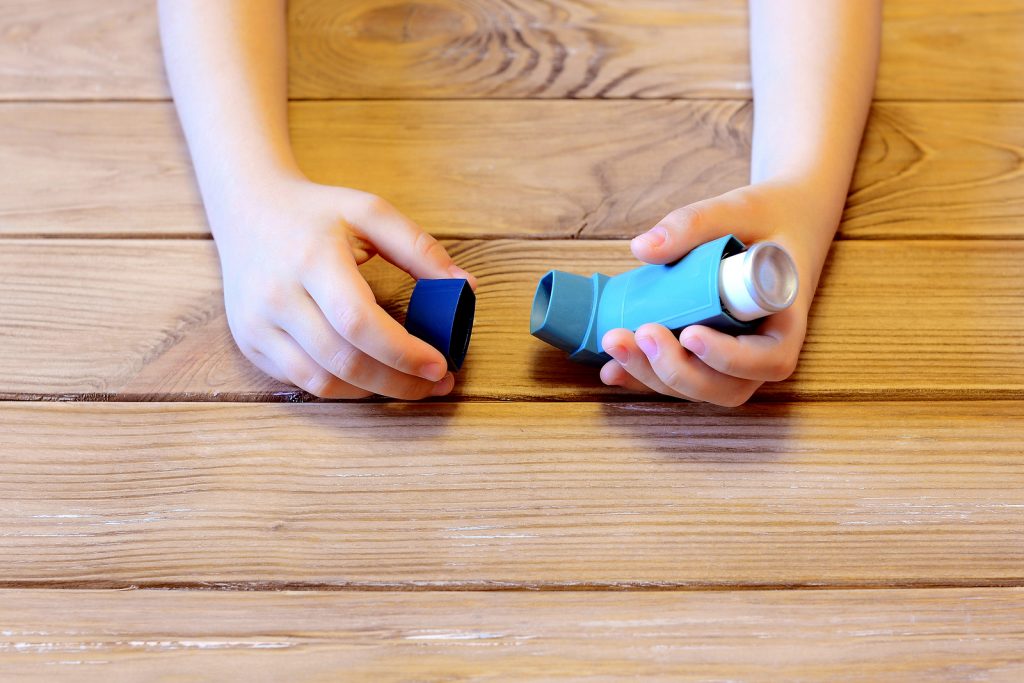In young children with early atopic dermatitis, sensitization to several foods is associated with an increased subsequent risk of sensitization to respiratory allergens. The identification of this should make it possible to better assess the risk of developing asthma in these children, for better prevention. | Forest Medical Spirometer Calibration
Sensitisation
Children with early atopic dermatitis, a well-known risk factor for allergy, do not all have the same risks of respiratory sensitization, and therefore of asthma. This is indicated by the results of a study conducted by researchers in France. Their work shows that the sensitization to several foods in the years following the onset of early atopic dermatitis (appeared before the age of one year), multiplies by a factor of almost four the risk of developing a disease.
“We are talking about sensitisation here,” says Jocelyne Just, co-research scientists of the paediatric allergology unit at Armand-Trousseau Hospital in Paris, “where allergen-specific IgE levels are high, but the child does not develop obvious symptoms in contact with these allergens”.
To search for predictors, researchers recruited 229 infants for six years. Each year, the participants were subjected to a dermatological, Spirometer calibration and testing, respiratory and biological control. The scientists analysed the concentration of total IgE, markers of allergies and that of eosinophils, markers of inflammation in case of allergy.
Better Prevention Of The Onset Of Asthma
The research showed that 37% of children were sensitive to many foods, most commonly egg, cow’s milk, or nuts. The research team also found that this “polysensitization” was largely predictive of subsequent sensitization to respiratory allergens, with a risk multiplied by 3.7. “It seems that atopic dermatitis causes significant porosity of the skin, which no longer ensures its proper role as a physical barrier.” It is significant as allergens pass through the skin. “This begins with volatile allergens from the egg or milk, so raising awareness in the early years, and secondly, the activated immune system reacts more to respiratory allergens”, describes Jocelyne Just.
Better knowledge of this mechanism and the associated risk factors should ultimately lead to better prevention of asthma resulting from this sensitization to respiratory allergens. “Early induction of tolerance to allergenic foods by dietary measures or reconstitution of the epithelial barrier in the respiratory system to prevent immune credible, in addition to ongoing Spirometer calibration and testing is an important step to combating the possible effects” concludes the researcher.
Asthma and Allergies
The elements that can trigger an asthma attack vary from person to person. They can also evolve over time from being harmless to dangerous in the same patient. In our previous article on Asthma and Allergies, we looked in-depth at the common substances and situations that may cause an asthma attack.
For twenty years, food allergies have been steadily rising in populations. While this phenomenon is important in adults, children are the primary victims. Besides the infamous peanut, potentially allergenic foods are hard to follow unless you have been professionally tested.
In most cases, several factors interact and these combinations affect asthmatics in different proportions. Each asthmatic has to recognize the factors behind their seizures, helped by possible allergic skin tests, and learning how to avoid them.
Forest Medical Spirometer Calibration
Spirometry is a breathing or ‘lung function’ test. It’s one of the most common tests people with asthma or people who are being tested for asthma, are given. Your GP or asthma nurse will ask you to take a deep breath and then breathe out as fast as you can and for as long as you can through a mouthpiece linked to a ‘Spirometer’. You will have to blow a few times so your GP or asthma nurse can get an accurate result.
As with all medical equipment, Spirometers need thorough and comprehensive testing on a regular basis. Failure to adequately test a Spirometer puts it at risk of failure or of false readings being displayed from the equipment, which can have disastrous results.
We undertake thorough Spirometer calibration to fully test your machines and ensure that they are safe and suitable for use.
Source
-
- Just et al. Natural history of allergic sensitization in infants with early onset atopic dermatitis: results from ORCA Study. Paediatric Allergy Immunology, online edition of October 6, 2014,

